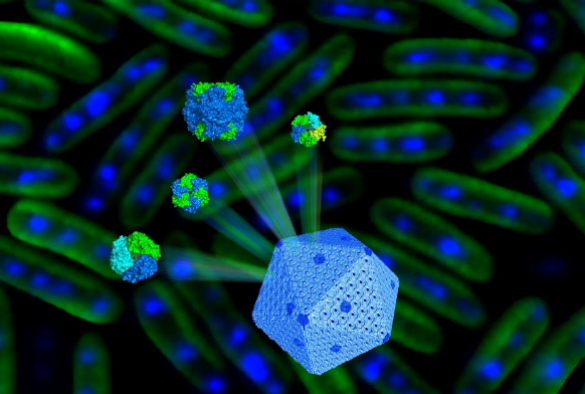
Scientists at the University of Liverpool have gained new insights into the self-assembling properties of unique protein ‘machines’ that help cyanobacteria boost their photosynthetic capability.
The research, which is published in the journal Plant Cell, could help inform the design and engineering of new nanotechnologies to improve crop yields and biomass production.
Cyanobacteria have evolved specialised organelles, called carboxysomes, for converting carbon dioxide to sugar – a process known as carbon fixation. Encased by a protein outer shell, carboxysomes contain nanoscale polyhedral protein shells filled with the carbon-fixing enzyme RuBisCO.
“How hundreds of proteins self-assemble to form a three-dimensional compartment architecture is a fundamental question in understanding the formation and regulation of biological machinery. In addition, the knowledge will spark bioinspired design and engineering of functional organelles in biotechnological applications, using synthetic biology approaches,” said Professor Luning Liu from the University’s Institute of Integrative Biology, who led the research.
In collaboration with Professor Mark Leake at the University of York, the researchers used advanced microscopic techniques to explore the exact abundance of individual building proteins that form a single carboxysome. Their findings reveal that the size and structure of carboxysomes is not constant and adjusts in response to environmental changes during cell growth.
“This is the first time the accurate content of carboxysome proteins at the single organelle level has been studied,” added Professor Liu. “It has renewed our understanding of the self-assembling and regulation of natural systems. As there is an increasing interest in installing active carboxysomes into crop plants to enhance photosynthesis, the knowledge learned from natural carboxysome construction will suggest the feasible way to produce functional carboxysomes in plants, with the ultimate goal of boosting crop yields.”
The project was carried out in collaboration with the Centre for Cell Imaging at the Institute of Integrative Biology and Liverpool Electron Microscopy. The project was funded by Royal Society, Biotechnology and Biological Sciences Research Council (BBSRC), and the Leverhulme Trust.
Research reference
The paper ‘Single-organelle quantification reveals the stoichiometric and structural variability of carboxysomes dependent on the environment’ is published in Plant Cell [DOI:10.1105/tpc.18.00787]